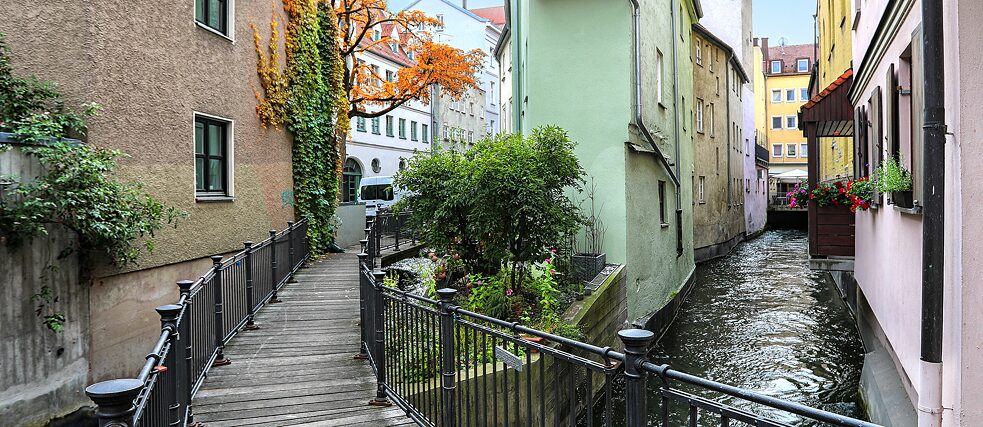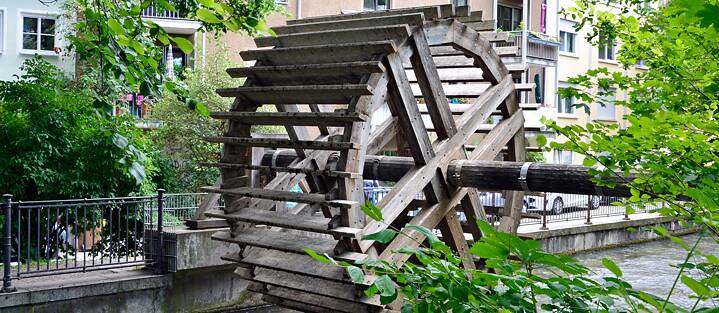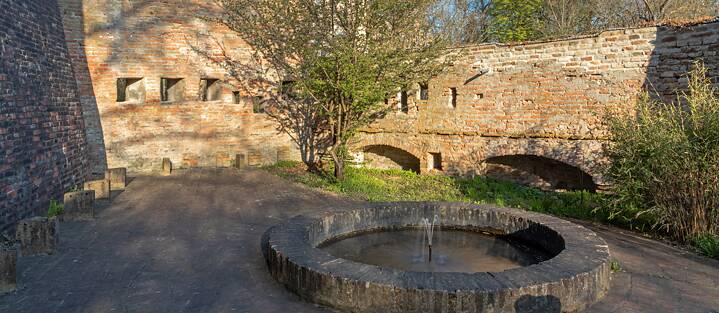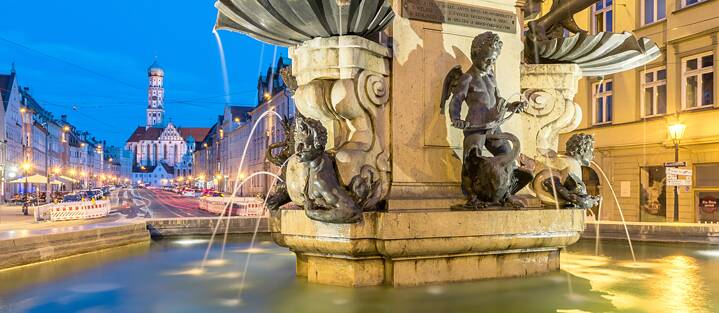Detours | Augsburg
Outstanding Water Culture

It’s hard to believe, but Augsburg has more bridges than Venice, not to mention wonderful fountains and countless small streams running through the city! The Romans built the first aqueduct and the Augsburgers later perfected the water system – a prime example of Swabian engineering skill in Bavaria’s oldest city.
By Daniel Hinz
In the Bavarian city of Augsburg, it is not ancient excavations, a magnificent church or the historic centre that have been designated UNESCO World Cultural Heritage. Since 2019, something quite unique has featured on this list: Augsburg’s water management system. It encompasses great water towers, beautiful drinking water fountains and 199 kilometres of streams that flow through the narrow streets of the old town. This network has been providing the city with drinking water and hydroelectric power for over 1,000 years: a system so impressive that UNESCO declared the entire ensemble a World Heritage site.
The people of Augsburg could perhaps be considered the influencers of the Middle Ages: in 1414 they built the first water tower in Central Europe, the Great Water Tower. It stands at Rotes Tor (the Red Gate), next door to the home of Germany’s famous puppet theatre – the Augsburger Puppenkiste. The tower was originally built out of wood, but was later bricked and raised to a height of seven stories.
That said, the Augsburgers did copy one technique used in North Italian towns: piston pumps driven by a water wheel pumped drinking water up into the water towers, from where the water was channelled via a downpipe and wooden conduits to initially seven public running wells. As early as the sixteenth century, engineers also connected several houses to a supply of running water. Local firms thrived thanks to this sophisticated water system – like the city butcher’s shop that was completed in 1609. The river Lech was routed directly through the shop, keeping the meat inside the building cool and making easy work of waste disposal.
It’s definitely worth stopping off in this city of 300,000 inhabitants. We have already mentioned the longstanding and ever-popular Augsburger Puppenkiste and the Roman legacy, but we shouldn’t forget the expansive historic centre or the Fuggerei that was built during the Renaissance era – a foundation named after a local family of merchants and probably the world’s oldest surviving social housing complex.
By the way, the outstanding water system also encompasses numerous fountains that provide free drinking water throughout the old town, as well as 530 bridges. This means that Augsburg boasts even more bridges than Venice! And more kilometres of waterways than the Italian tourist magnet, too.
DETOURS
What does Görliwood mean, why can you find a piece of the Caribbean in Bavaria and where can you dance in front of bucket wheel diggers? In our series we take you on a trip each month to somewhere in Germany that you may not yet know but should definitely be introduced to. We reveal places that are not to be found on the usual tourist trails. Are you ready for a bit of a detour.



